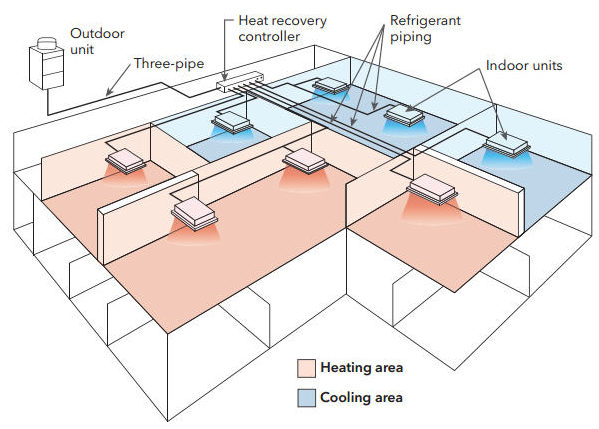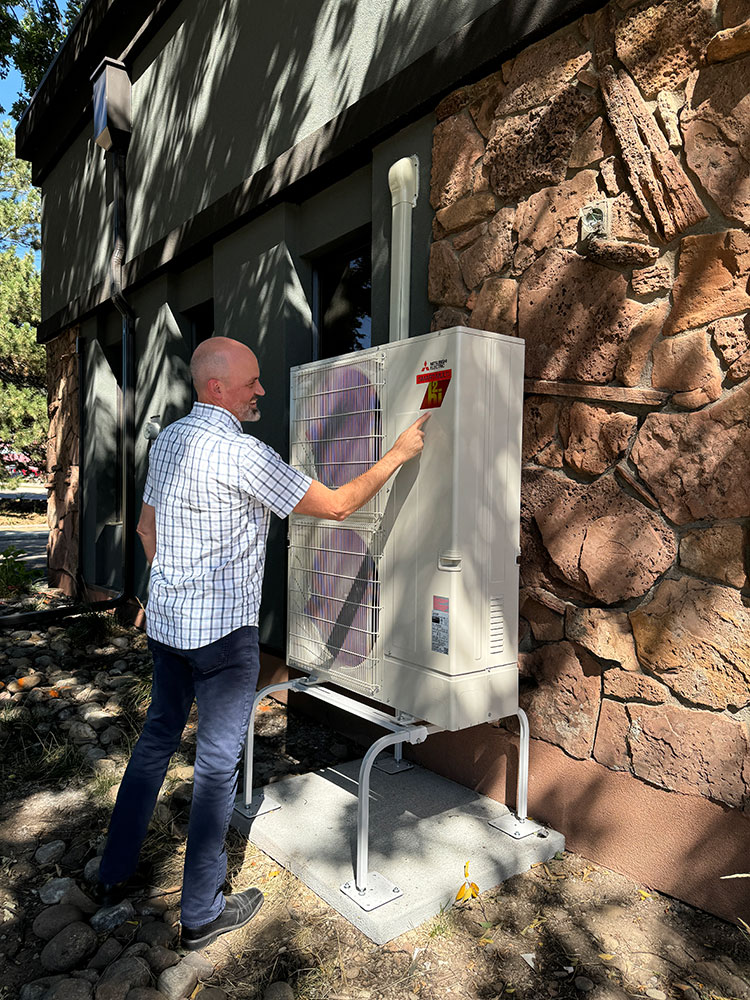Heat pump systems are an all-electric option for heating and cooling needs that offers many benefits, including options for zoning and heat exchange between spaces to improve comfort and efficiency. Paired with renewable energy, heat pump systems can achieve carbon neutral status, while providing space conditioning for many types of commercial facilities, such as office buildings, hotels, schools, houses of worship, and historical buildings.
A heat pump system transfers heat energy between the building and a thermal reservoir outside of the building. The thermal reservoir can be the air, water or ground, and heat is transferred from the higher temperature zone to the lower temperature zone. Heat pumps can deliver one-and-a-half to three times more heat energy to a building than the electrical energy that it consumes. This is possible because a heat pump moves heat, rather than converting it from a fuel like combustion heating systems do.
In addition to space conditioning, heat pumps have the ability to heat water and clothes driers. A kitchen refrigerator is basically a heat pump that transfers heat in only one direction.
In cold weather, a heat pump system provides warm air by transferring heat from outside to inside the building. The process is reversed in warm weather to provide cool air by moving heat from inside of the building to outside.


